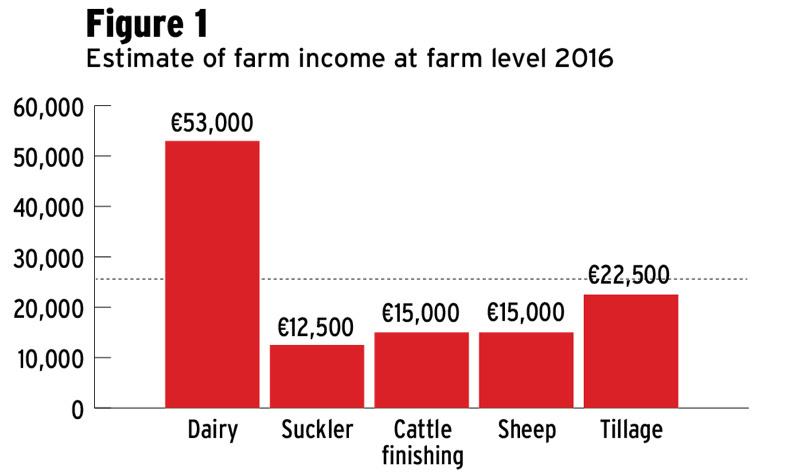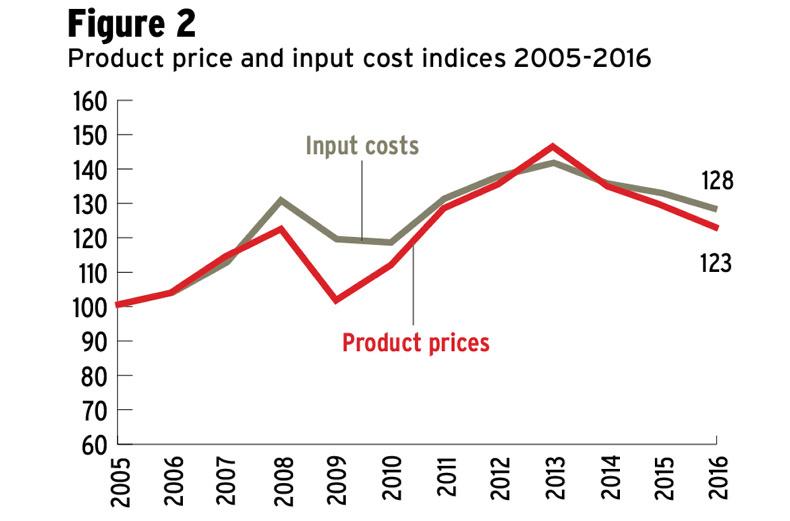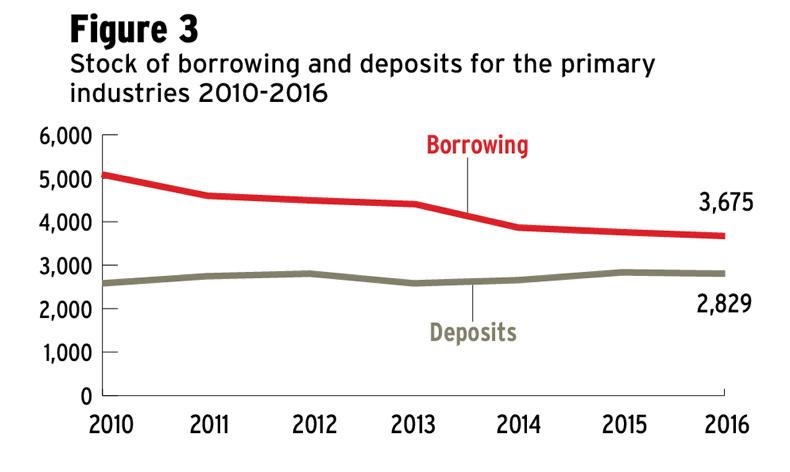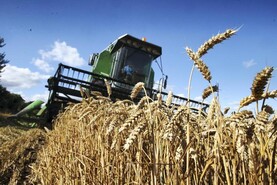Dairy and beef farmers lost more than €100m in farmgate output due to lower milk and beef prices last year, according to the IFA.
The value of farmgate output fell by some €40m across all sectors but the dairy and beef sectors were worst hit by falling prices for their produce.
More milk and more beef were produced last year as dairy expansion continued apace. In the dairy sector, milk volumes rose by 5% but the farmgate value fell by €112m (11%).
The value of cattle output fell by €59m (6%) during the year, while farmers produced 4% more animals.
In the case of cereals and mushrooms, both farmgate prices and volumes fell. Tillage growers lost out on €37m compared to 2015, while the impact of the Brexit vote and sterling weakness saw mushroom output slashed by €19m.
On a more positive note, the cost of fertiliser, feed, energy and seed all fell last year. By far the biggest reduction was in fertiliser costs, which fell by 15% or €85m compared to 2015.
Potato growers also benefitted from a 25% increase in farmgate prices, with the 2016 output growing by €28m to €141m. Pig and poultry farmgate incomes grew by €16m (3.4%) and €14m (9.8%) respectively.
The IFA has estimated the national farm income at €2.56bn for 2016, including farmgate output and direct payments. The Farm Income Review 2016, published on Thursday, shows that national farm income was up €50m (2%) over 2015.
However, the breakdown of national farm income shows that the value of farm output fell by €40m due to lower prices.

This was masked by a €128m increase in direct payments. Around €50m of this increase was a carryover of Basic Payment Scheme (BPS) money from 2015 and more than €70m came from increased Rural Development Programme funding for agri-environment measures such as GLAS.
Direct payments, accounted for 60% of farm income last year.
The 2016 national farm income of €2.56bn represents just 70% of the national farm income for the year 2000 when inflation is taken into account. The number of people who rely on farming as their main job rose again last year, climbing by 4,000 to 114,000 people. This is 7,000 higher than in 2013. Of the 114,000 people, 101,000 were men and 13,000 women. Milk price is the key issue in 2017 for 60% of dairy farmers, with Brexit identified as a key issue for more than 25% of farmers on beef, tillage and sheep farms.

Dairy and beef farmers lost more than €100m in farmgate output due to lower milk and beef prices last year, according to the IFA.
The value of farmgate output fell by some €40m across all sectors but the dairy and beef sectors were worst hit by falling prices for their produce.
More milk and more beef were produced last year as dairy expansion continued apace. In the dairy sector, milk volumes rose by 5% but the farmgate value fell by €112m (11%).
The value of cattle output fell by €59m (6%) during the year, while farmers produced 4% more animals.
In the case of cereals and mushrooms, both farmgate prices and volumes fell. Tillage growers lost out on €37m compared to 2015, while the impact of the Brexit vote and sterling weakness saw mushroom output slashed by €19m.
On a more positive note, the cost of fertiliser, feed, energy and seed all fell last year. By far the biggest reduction was in fertiliser costs, which fell by 15% or €85m compared to 2015.
Potato growers also benefitted from a 25% increase in farmgate prices, with the 2016 output growing by €28m to €141m. Pig and poultry farmgate incomes grew by €16m (3.4%) and €14m (9.8%) respectively.
The IFA has estimated the national farm income at €2.56bn for 2016, including farmgate output and direct payments. The Farm Income Review 2016, published on Thursday, shows that national farm income was up €50m (2%) over 2015.
However, the breakdown of national farm income shows that the value of farm output fell by €40m due to lower prices.

This was masked by a €128m increase in direct payments. Around €50m of this increase was a carryover of Basic Payment Scheme (BPS) money from 2015 and more than €70m came from increased Rural Development Programme funding for agri-environment measures such as GLAS.
Direct payments, accounted for 60% of farm income last year.
The 2016 national farm income of €2.56bn represents just 70% of the national farm income for the year 2000 when inflation is taken into account. The number of people who rely on farming as their main job rose again last year, climbing by 4,000 to 114,000 people. This is 7,000 higher than in 2013. Of the 114,000 people, 101,000 were men and 13,000 women. Milk price is the key issue in 2017 for 60% of dairy farmers, with Brexit identified as a key issue for more than 25% of farmers on beef, tillage and sheep farms.










 This is a subscriber-only article
This is a subscriber-only article














SHARING OPTIONS: